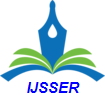Abstract:
The present paper has looked into the disparities in GDP per capita of SAARC (South Asian
Association for Regional Cooperation) nations using alternative measures of income inequalities.
The formation of SAARC as a regional bloc in December 1985 consisting India, Bangladesh,
Pakistan, Bhutan, Srilanka, Maldives and Nepal had the basic objective of enhancing economic
growth of the member countries by encouraging intra-regional trade. Over three decades later,
today, when we evaluate the progress of such regional arrangement, it is not found satisfactory.
Comparison of intra-regional trade in SAARC with that in other regional trading blocks across
the world reveal the same. Under such circumstances, effort to find out the possibilities for
consolidation of the integration process in near future becomes imperative. One possible way to
judge it is to check the trend of economic inequality existing among these nations over the years.
In relation to that different measures of economic inequality viz. co-efficient of variation, gini
index, Atkinson index, Williamson index, coulter coefficient, hoover index and theil index have
been estimated for the years 1970 to 2011 which confirms declining trend in inequality among
these nations. The results of the inequality measures support the declining disproportions among
SAARC and advocate for utilizing the potential scope for further consolidation of the region. |
Cite this Article: [Dey, Shabari Paul, and Debasis Neogi, Dr. "MEASURING INTRA-REGIONAL INCOME INEQUALITY OF GDP PER CAPITA DURING 1970-2011: A STUDY ON SOUTH ASIA." International Journal of Social Science & Economic Research 2.5 (2017): 3530-545. ] |
 International Journal of Social Science & Economic Research
International Journal of Social Science & Economic Research

